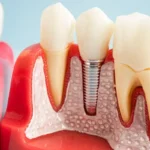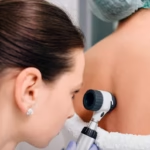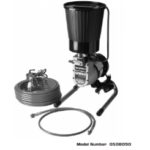When fallopian tubes become blocked, they can prevent eggs from meeting sperm, making conception difficult or impossible. A fertility clinic plays a central role in diagnosing this condition and offering targeted treatment options to improve reproductive outcomes. Here’s how a fertility clinic identifies and addresses blocked tubes:
Understanding Blocked Fallopian Tubes
Fallopian tubes serve as pathways for eggs to travel from the ovaries to the uterus. When these tubes become blocked, fertilization cannot occur naturally. The blockage may be partial or complete and can happen in one or both tubes.
Several conditions can cause blocked tubes. Pelvic inflammatory disease often creates scar tissue that blocks the tubes. Endometriosis can also cause blockages when tissue grows outside the uterus. Previous surgeries or infections may lead to adhesions that close off the tubes.
Women with blocked tubes often have no obvious symptoms. Some may experience pelvic pain or unusual menstrual bleeding. Most women discover the problem only when they have trouble getting pregnant after trying for several months.
Identifying Tubal Blockages
A fertility clinic uses various diagnostic methods to identify blocked fallopian tubes. These approaches are designed to pinpoint the issue accurately and guide appropriate treatment. The main diagnostic methods include:
- Hysterosalpingography (HSG): An X-ray procedure in which dye is injected into the uterus and fallopian tubes to detect blockages or abnormalities.
- Sonohysterography (Saline Sonogram): A technique using a saline solution and ultrasound to identify blockages or irregularities in the reproductive system.
- Laparoscopy: A minimally invasive surgical procedure in which a small camera is inserted into the abdomen to view the reproductive organs directly.
- Ultrasound: While less detailed than other methods, it can help identify large blockages or structural abnormalities.
- Blood and hormone tests: These may be performed alongside imaging studies to evaluate overall reproductive health.
Utilizing these methods helps fertility specialists accurately determine whether blocked fallopian tubes are contributing to infertility.
Treating Blocked Fallopian Tubes
Fertility clinics provide a range of treatment options designed to address blocked fallopian tubes and improve the chances of conception. Here are some common treatments offered:
- Tubal surgery: Procedures such as tuboplasty can repair or remove blockages in the fallopian tubes and restore their function.
- IVF (in vitro fertilization): IVF bypasses the fallopian tubes entirely by fertilizing the egg and sperm in a laboratory before transferring the embryo directly into the uterus.
- Salpingectomy: In cases where the fallopian tubes are severely damaged, removing them prior to IVF can improve success rates by eliminating sources of inflammation or infection.
- Minimally invasive techniques: Procedures such as laparoscopic surgery or hysteroscopy can be used to open blocked fallopian tubes.
By offering these interventions, fertility clinics provide comprehensive solutions tailored to the severity and nature of the tubal blockage, supporting patients on their journey to achieve pregnancy.
Supporting Fertility After Treatment
Lifestyle changes can support overall fertility health. Maintaining a healthy weight optimizes hormone levels and improves treatment success rates. Regular exercise and a balanced diet provide the body with nutrients needed for reproductive health. Avoiding smoking and limiting alcohol intake also supports fertility.
Some patients benefit from fertility medications after tube repair. These medications help regulate ovulation and increase the chances of pregnancy. A fertility care center works with each patient to determine the best combination of treatments for their specific situation.
Visit a Local Fertility Clinic
Blocked fallopian tubes are a common but treatable cause of infertility. Modern fertility clinics offer accurate diagnostic tests and effective treatment options. Contact a fertility clinic near you to schedule your visit, discuss your options, and develop a personalized treatment plan that addresses your specific needs and goals.











